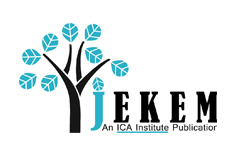Abstract
This paper, using the Solow growth model looks at the impact of liberalization on India’s economic growth. Additionally, using empirical data, it analyzes the patterns, processes, and characteristics of India’s economic growth. The Solow model explains the long run economic growth via the change in the Solow residuals. This paper defines the Solow residual as International trade. This paper will show that International trade and fewer regulations on exports and imports have ignited high economic growth in India. After the late 1980s, India saw an immense increase in international trade. Led by low tariff rates, India saw a hike in exports and imports and more importantly, foreign investments. With the backing of facts and figures, this paper will show that India has actually benefited in terms of economic growth from international trade. With liberalization, India has not only had success in the macro level, but it has also impacted people in terms of per capita income in the micro level. This paper is broken down into 4 sections. The first section gives an introduction to India and its relevance to the Solow model. The second section explores the theoretical framework of the Solow model. The third section uses the empirical data to examine the impact of liberalization on India (pre and post reformation). Finally, the fourth section is the analysis and conclusion section which compares India to other South Asian counties and gives policy recommendation.
DOI
10.7885/1946-651X.1090
